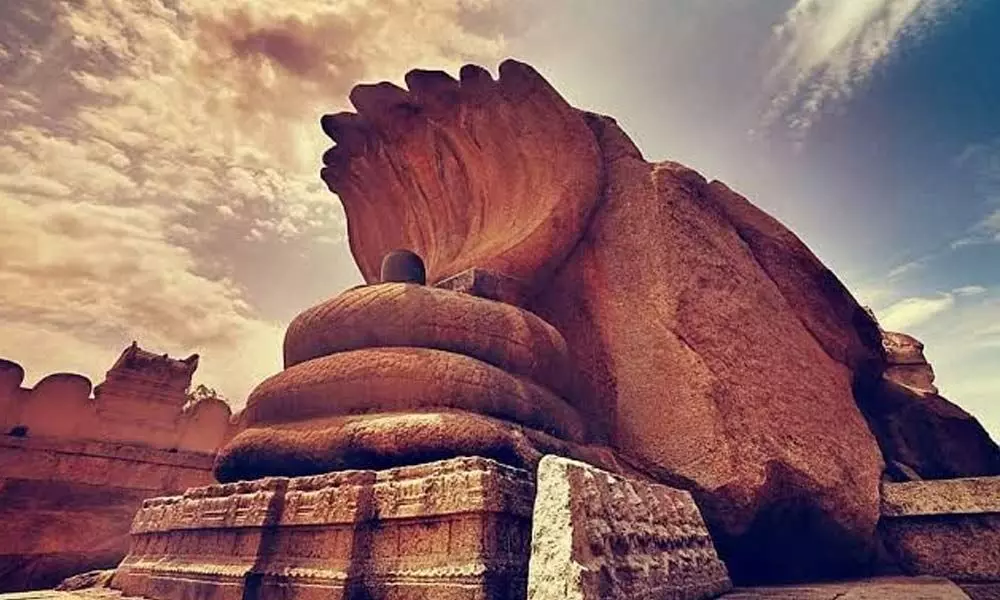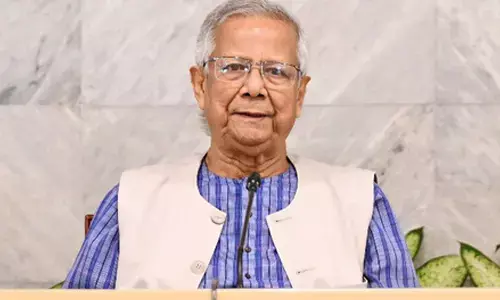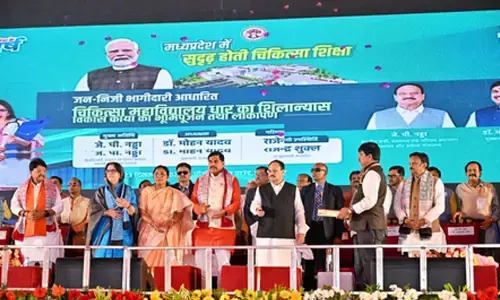Need to protect Lepakshi from encroachments

A view of Lepakshi temple
The famous Veerabhadra Swamy temple at Lepakshi, about 100 kms north of Bengaluru, along with the iconic Nandi statue is added to UNESCO's tentative list of world heritage sites in India for 2022.
Lepakshi (Anantapur): The famous Veerabhadra Swamy temple at Lepakshi, about 100 kms north of Bengaluru, along with the iconic Nandi statue is added to UNESCO's tentative list of world heritage sites in India for 2022.
The inclusion on the list is a step closer to the monument of cultural, historical and architectural significance being declared a part of world heritage, but its lands were usurped and encroached upon by vested interests. A world heritage status for the temple complex has been a long-pending demand which was renewed last year when the Ramappa temple in neighbouring Telangana was inscribed as a UNESCO world heritage site. The famous Veerabhadra temple that datesback to 15th-16th century and is dedicated to Veerabhadra, is located here.
It is one of the finest and oldest temples of India. It was built by the brothers Viranna and Virupanna. And, this temple is one of the most notable examples of Vijayanagar architectural style. Also, it is famous for its sculptures. These were created by the artisans of Vijayanagara empire. Also, it has idols of Ganesha, Nandi, Veerabhadra, Shiva, Bhadrakali, Vishnu and Lakshmi. A huge Nandi bull made of a single granite stone is one of the major attractions near the main Lepakshi temple. And, the place is renowned for being one of the best repository of mural paintings of the Vijayanagar Kings. Many old Kannada inscriptions dating back centuries can be seen on its walls.
Lepakshi, considered a sculptural marvel, is in Anantapur district of AP. It was built in 1524-1536 during the tenure of Achyutha Raya. It reflects the Vijayanagara style of architecture, with ornate sculptures and frescoes.
The Lepakshi Nandi, locally popular as Lepakshi Basavanna, is a monolithic bull in sitting posture lying about 250 meters from the temple. The Nandi, about six meters in height, is carved out of a single granite stone. A major attraction within the temple is the massive carving of a seven-headed serpent shielding Sivalinga. Another allure is a 'hanging pillar.' There are about 70 pillars at this fabulous 16th-century temple of stone in Vijayanagar style, but this one is the best known and a tribute to the engineering genius of ancient and medieval India's temple builders. However, it is a bit dislodged from its original position. A paper or a thin piece of cloth can be passed from below the pillar and it comes out unhindered at the other end.
The temple is built in seven prakaranas, only three prakaranas are visible the remaining four prakaranas was illegally occupied. Mischievous land grabbing practices have become a common occurrence in Lepakshi. Influential people including political leaders, police personnel reportedly usurped lands worth crores of rupees, with the support of officials. Tea shops, tiffen centres, fastfood centres, offices, schools and nearly 300 to 400 families are living within the restricted area. Chicken and mutton stalls are located near the temple. Illegal encroachments should be stopped. The local leaders, elected representatives, historians and civil organisations should constitute a coordination committee and develop the temple and a detailed project report should be submitted to both State and Central government to take remedial action. Otherwise Lepakshi will not be recognised by UNESCO.












